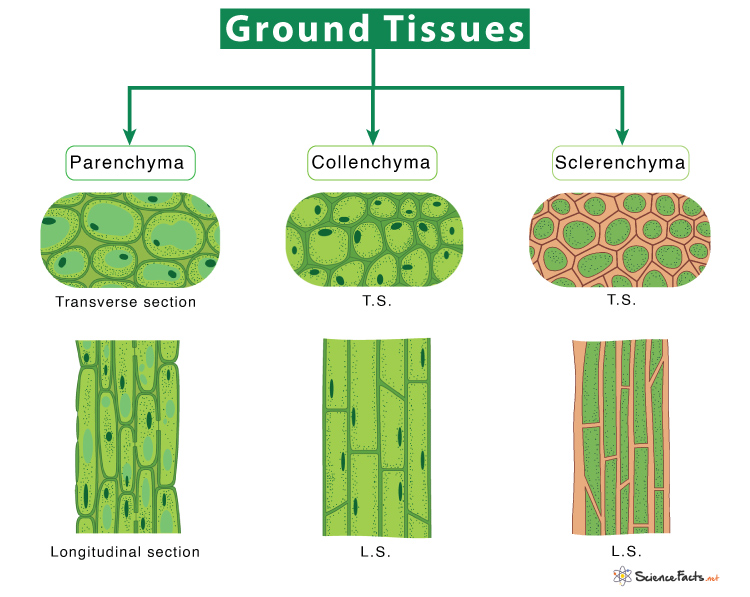It is essential because it helps plants grow, repair, regenerate after injury, and produce and store food as carbohydrates. Finally, ground tissue provides structural support in plants and the floating capacity in aquatic plants.
Types of Cells in Ground Tissue with Functions
1. Parenchyma
They are living, undifferentiated cells that can divide and differentiate into all cell types (totipotent). Parenchyma is the most abundant ground tissue in plants. They have primary cell walls, which are thin and flexible and mostly lack a secondary cell wall. Most leaves are made of parenchyma cells containing chloroplast and thus help to produce food by photosynthesis. In roots and stems, parenchyma cells are the site of sugar and starch storage and are called pith (in the root center) or cortex (in the root periphery). They also form the endosperm of seeds and the pulp of fruits. There are three types of specialized parenchyma cells in plants:
2. Collenchyma
They are living and elongated, having relatively thicker primary cell walls than parenchyma. They are found below the epidermis or the outer layer of cells in young stems and leaf veins. They are usually absent in roots. Collenchyma cells provide structural support to the young shoot system but remain alive once they are mature. They retain the ability to stretch and elongate.
3. Sclerenchyma
They are dead cells at maturity that are hard due to lignin deposition. This tough substance is the primary component of wood. Unlike the other ground tissue, sclerenchyma has secondary cell walls. As they are dead, these cells are usually found in the non-growing regions of the plant, such as leaf veins, stem, branches, trunk, and bark. Sclerenchyma cells, therefore, cannot stretch, providing mechanical support, thus contributing to the rigidity of the plant and giving it a definite shape. Based on structure, sclerenchyma tissue is classified into two types: fibers and sclereids or stone cells.
